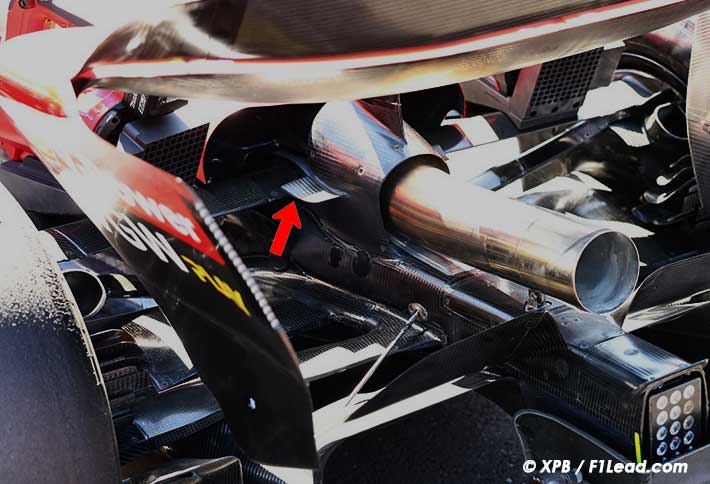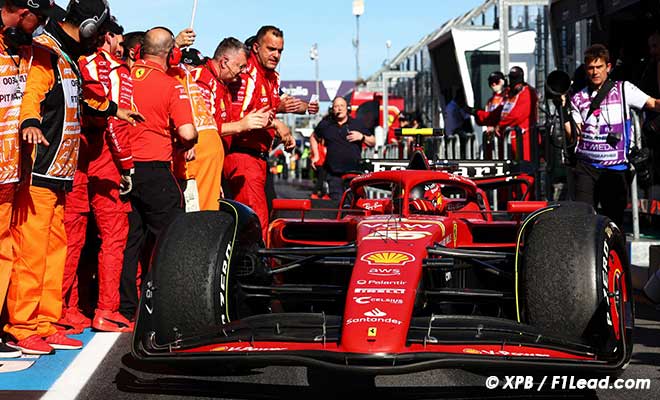Carlos Sainz’s recent victory in Australia raised eyebrows, blending luck with undeniable skill. His performance could hint at a strong challenge to Verstappen’s dominance, had Red Bull’s reliability not faltered.
While Ferrari’s victory in Australia might have been somewhat fortuitous, it’s uncertain if Sainz wouldn’t have contested Verstappen for the win had the Red Bull been reliable.
Carlos Sainz’s surgical victory in Australia could almost make one believe that an appendectomy gives the driver-patient an extra chance to win a Grand Prix, humorously noted by Lando Norris on Instagram.
The Spaniard is the first driver to win in F1 coming back from an injury or medical absence since Gerhard Berger’s victory (post sinus surgery) at the German Grand Prix in 1997.
More seriously, it wasn’t just the few grams saved on his weight that allowed Sainz to clinch the win. At least three factors played a crucial role.
Firstly, he certainly benefited from Max Verstappen’s retirement, his first since withdrawing due to an oil leak on the same circuit two years ago.
Next, Carlos Junior outqualified his teammate under tricky conditions. On Saturday, between the third free practice session and qualifying, the wind picked up. It was a tailwind in turns 1 and 3 (increasing understeer) and a headwind in the fast sequence of turns 9 and 10 (increasing oversteer).
Under these conditions, Leclerc lost confidence in his car (which he felt lacked front-end grip) while Sainz, more analytical, managed to excel despite a mistake at turn 9 (less severe, however, than that of his garage neighbor). While matching Verstappen’s pace, he lost control of the Ferrari at the ninth turn, shedding four-tenths in the process – a deficit he narrowed by a tenth by the end of the lap.

Thirdly, the SF-24 – equipped in Australia with a mini winglet on the rear wing pillar (no technical novelties at Red Bull, Mercedes, and McLaren) – managed the “graining” phenomenon better than the Red Bull (as was already the case in Las Vegas), suggesting that Carlos could have posed a threat to Max even if the RB20 had been completely reliable.
The “graining” of both front and rear tires on medium and hard compounds made tire management particularly challenging on Albert Park’s still-smooth asphalt. When the tire surface is much hotter than the inside of the rubber, this outer layer distorts into waves (under the action of lateral forces in corners). The peaks of these “waves” detach and then reattach to the tread as small grains. This grainy surface prevents the tire from having a good contact area with the asphalt and makes it more slippery.
“In graining, it’s a drop in temperature that comes into play,” explained Loïc Serra, the former performance director at Mercedes and a Michelin veteran, in an article dedicated to graining and blistering in F1. “When the tire cools down too much, it becomes a sort of glass, which breaks like glass. This shows how much the tire is a living material.”
On a track still smooth after the 2022 resurfacing, where the tire has little to bite into, the car transfers relatively little energy into the carcass, leaving the tread unsupported. Hence the “graining” of both front and rear tires across all three compounds, reducing their lifespan.
Thus, the race was limited by wear, not temperature. Yet, Red Bull’s ability to control thermal degradation of its tires has been its main advantage over the last three seasons – an advantage that was futile in Australia, given the Albert Park layout. In short, the Ferrari had a technical advantage over an RB20 that was struggling since the weekend’s start. However, starting at the front greatly aids in controlling “graining,” and it was Verstappen who had secured pole position and kept Sainz at bay. Until a brake issue prevented him from defending against the Ferrari’s attack, forcing him to retire later.
Leading the race, the Spanish driver managed his tires better than his teammate (especially the left front tire), who was uncomfortable with his first set of hard tires (hence his early pit stop).
With this victory in Australia, Carlos Sainz, along with Max Verstappen, is the only driver to have won in Formula 1 in the past eleven months. Will these two find themselves together at Red Bull next season, nine years after their first stint as teammates at Scuderia Toro Rosso?
- ReadMore>“Giving Our All”: Vasseur’s Praise for Sainz
- Following us on Facebook and Twitter
Sainz’s Win in Australia: Luck or Skill?. Sainz’s Win in Australia: Luck or Skill?
